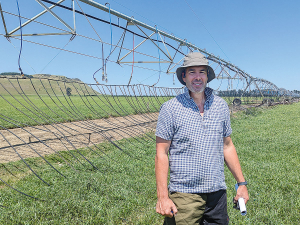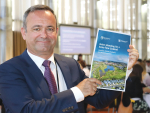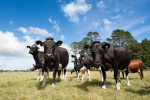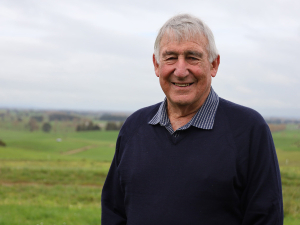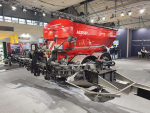North Canterbury dairy farmer and recently-elected deputy chair of DairyNZ, Cameron Henderson, is enjoying a huge reduction in irrigation water use after converting a pivot irrigator to drag perforated drip tubes across the ground instead of elevated sprinkler heads.
The conversion is part of a ‘nanobubble’ oxygenation system produced by the Nanobubble Agritech company, which Henderson is trialling.
The nanobubble idea comes from hydroponic practise, where the roots of plants are constantly immersed in nutrient solution. Injecting very tiny bubbles of oxygen into the water, small enough to stay in suspension without dissipating, is used as a means of keeping the roots oxygenated despite being submerged.
Henderson is trialling the system to see whether the claimed benefits will translate to improved grass growth in a pastoral system. But while the jury is still out on that, he is already pleasantly surprised by a big reduction in water use.
Henderson recently hosted a field day on his farm near Oxford, which he converted from sheep in 2011.
The property is 237ha, 220ha effective, and peak milking about 750 crossbred cows. A nearby 200ha is used for rearing young stock and growing grain and grass silage for the platform.
Irrigation is from six wells via three pivots, K-lines and laterals.
Henderson told attendees at the field day he wasn’t trying to sell the nanobubble system but there were claimed benefits in both grass growth and control of some soil pathogens.
A Massey University study suggested a 50% increase in grass growth could be possible.
“The theory around trying to get more oxygen into the soil and helping root growth seems to make sense to me,” said Henderson.
At the time of the field day in early December the system had only been in full operation a couple of weeks and it was too early to say whether it was delivering on the oxygenation benefits.
However the drip tubes were already showing 25-30 percent water saving compared to sprinklers.
Henderson said that was a big saving for a farm where water is the constraint, where they were paying to pump every litre of water from underground, and pumping capacity was probably only just enough for an average season.
He knew from research in the US that savings were likely from the tubes but the amount was “a bit of a surprise.”
“With the tubes, it’s all being delivered directly to the soil.
“You’re not getting the evaporation off the leaf, you’re not having the losses from the wind. It could be blowing 40-50 km/h out there. We know that we’re getting that water delivered to the soil. So that’s been a real bonus.”
However, there was some technical difficulties including preventing cows walking among and standing on the tubes, and tubes getting caught in the wheels when the pivot changes direction. One section had blown over in a high wind but it wasn’t clear whether wind resistance of the tubes made the pivot more likely to blow over, or their weight was actually helping anchor it down.
They were also experimenting with factors such as the spacing of the tubes – whether there would be moisture banding in the soil if they were too far apart, particularly in light soils.
Henderson said the drip tubes could be a huge benefit for farmers, but they would not be for everybody.
How to cross fences or get past sheds under the pivot were among the factors that would have to be considered.
“I’m certainly not going to stand up here and say ‘buy the system’. That’s not my job. We’re here just trying to understand what might work for our system firstly.
“But the nanobubble stuff, we’ll see after the summer what the difference might be. We’ve got control sections out there to try and understand that.”





